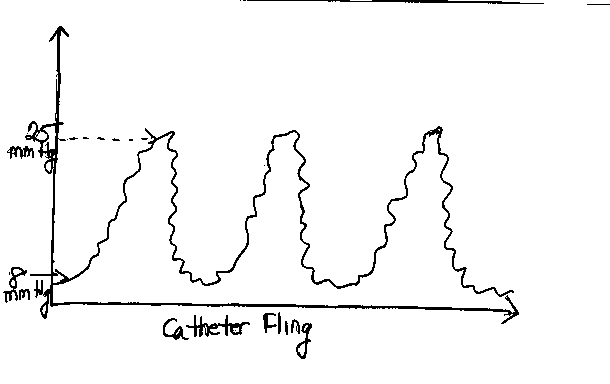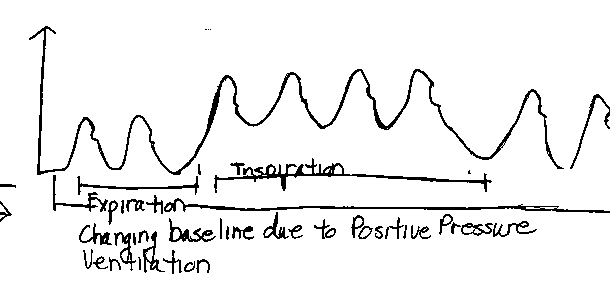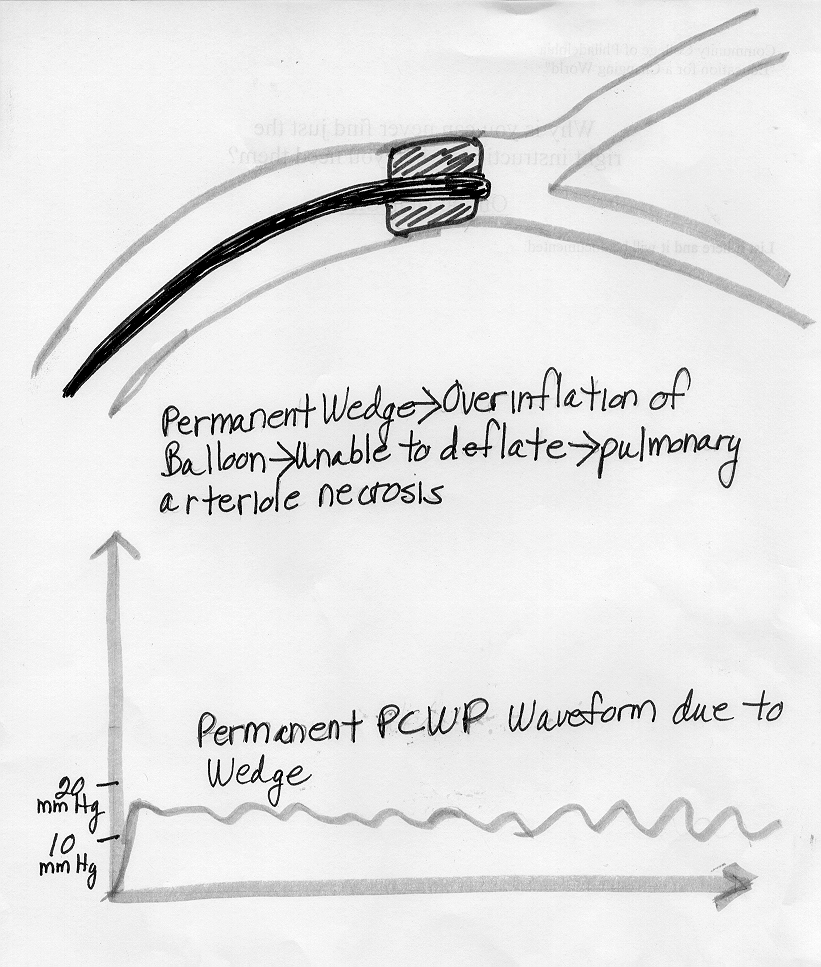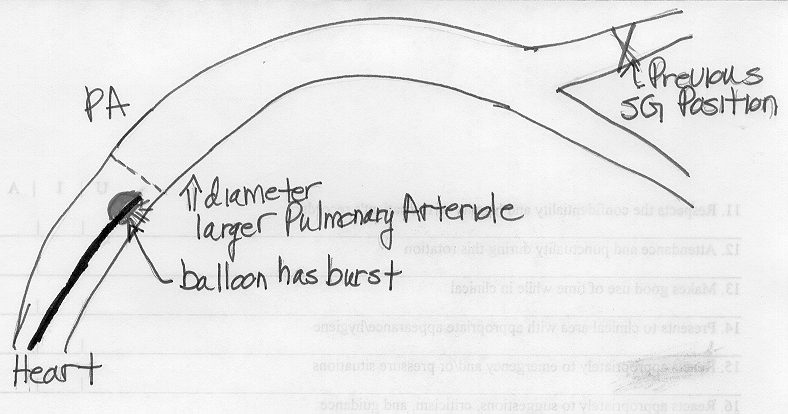Section Five--Troubleshooting with the Swan-Ganz Catheter
The major problems that can effect the Swan-Ganz Catheter performance are the following:
1) Dampening of the Waveform
2) Catheter Fling
3) High Positive Airway Pressures
4) Permanent Wedging of the Balloon
5) Failure of the Balloon to Wedge
Letís deal with each of these individually.
1) Dampening of the Waveform
--When the Distal Lumen tip becomes partially occluded by the vessel wall or a thrombus, the recorded waveform suffers. Amplitude diminishes until the tip of the catheter is completely blocked and the waveform is lost.*the graphic below shows the proper PA position and the proper waveform
.
*This next graphic shows a dampened arterial wave form due to a thrombus at the catheter end, and the catheter is pushed up against the wall
. 
Purging the distal lumen with heparinized saline can usually restore the waveform. Pulling the red pigtail on the Sorenson Interflow for two to three seconds can do this.
*
2) Catheter Fling
--High Cardiac Output or abnormal vessel diameter (vasoconstriction) can cause turbulent flow in the pulmonary arteriole. The result may be severe catheter tip movement which renders pressure measurements unreliable.

3
) High Intrathoracic pressures from mechanical ventilation may be transmitted to the pulmonary capillary bed and cause the PCWP to rise and fall Movement of the baseline that coincides with the respiratory cycle is evidence of this.
If this situation occurs, readings should be taken at the end of expiration when the intrathoracic pressure is the lowest.

4) Permanent Wedge--If the distal tip of the Swan-Ganz migrates further into the pulmonary arteriole then planned, it may become permanently wedged even though the balloon is deflated. This is indicated by a persistent PCWP waveform with the balloon deflated. Occlusion of this vessel prevents perfusion of the downstream lung parenchyma, thus it could result in death. The Swan-Ganz catheter should be slowly removed from the insertion site as quickly as possible. Once withdrawn the catheter should never be reinserted due to the danger of infection.
*
This graphic reviews the proper position of the Swan-Ganz catheter just below wedging occurs.*This graphic shows the proper wedging technique to get an accurate PCWP.

*
the above graphic illustrates overinflation of the balloon and possible migration of the balloon into a more distal pulmonary artery than it had originally been in, thus resulting in a permanent wedge waveform on the monitor.5) Failure to wedge
--The Swan-Ganz catheter may fail to wedge for several reasons. First the tip may have floated back into a larger section of the pulmonary arteriole where the vessel lumen is too large for the balloon to occlude it. This is corrected by advancing the catheter under sterile technique only. If sterile technique can not be guaranteed, it should not be advanced. Wedging of the tip can sometimes be achieved by repositioning the patient or having him cough..*We have seen the above graphic which gives us an accurate PCWP. The graphic below shows the catheter failing to wedge as it has slipped back into a larger pulmonary arteriole and the balloon has burst
.
The catheter tip will also fail to wedge if the balloon has burst. The Swan-Ganz balloon can be destroyed by over inflation or careless retraction of the syringe plunger. When this occurs, PCWP can only be estimated. In the absence of lung disease, PCWP should be within 4-5 mm Hg of PA diastolic pressure.
"What the mind makes cloudy, the heart makes clear." (Don Henley)
"The Heart knows reasons the mind does not know." (Voltaire)